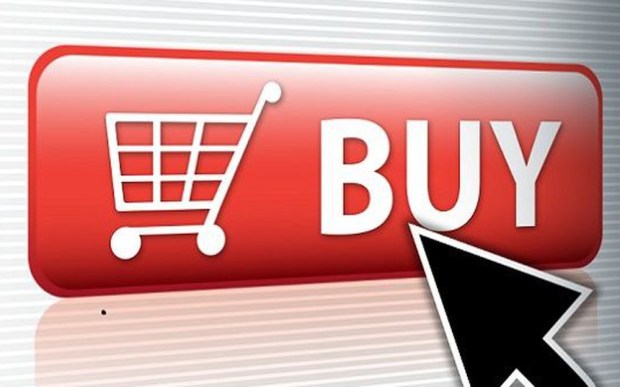Can ‘One-Click’ Buying Become Internet Standard?

“Sometimes I will think that I bought something and I press the button, ‘Buy this,’ and I don’t realize it didn’t go through,” Mr. Tim Berners-Lee said in a recent interview. “We are long overdue for a payments user interface for the web.”
There are probably few people more qualified to speak on the internet and what it needs than Tim Berners-Lee, since he is widely cited as its “father.” If he says the internet needs a payments user interface — odds are he’s on to something.
He’s also not alone — and the web’s governing body (yes, there is one), the World Wide Web Consortium, or W3C, has officially tapped firms like Google, Facebook and Apple to make paying online go better for everyone. Think Amazon One-Click writ very large.
The new standard is to be designed to create a single way for users to add credit cards and payment systems to any web browser so that they can be used for any purchase on the web. Something like the autofill function for forms that sites already have – only the “fill” is invisible and can be input with a single click.
To make this not a massive security liability — rather than sending card details, browsers will instead generate a payment token that will stand in for a card number.
The potential issues are myriad — and primary among them is adoption. Three key groups need to decide they want to do this — it won’t work if online merchants, web browsers or consumers fail to adopt the new standard. And this isn’t exactly new ground — Amazon and PayPal have respectively been building and managing this infrastructure for a while, as have the card networks.
Payments analysts, however, think the strength or potential strength of this system is that it doesn’t chose between methods – it’s equally open to any existing card or payment app and instead is an effort to make the information usable across the sites access by a common browser.
“Instead of simplifying the world, we have been fragmenting it into a million apps,” said Eric Shea, a payments consultant at Kurt Salmon Digital. “If we can get back to that single integrated solution that everyone has on their phone and their desktop, that is the way to move forward and get adoption.”
The W3C project is not exactly great news for either PayPal or Amazon, given their current dominance in online payments. Both have gained business and fees with their more streamlined checkout processes. Neither firm is a player in the current W3C initiative. It is considered likely that both services will remain an option for those who prefer not to input payment detail into their browsers.
But the W3C has managed to bring in Apple, Microsoft, Facebook, American Express, Alibaba and Tencent, among 40 other large web firms.
All met last week in Portugal to put the finishing touches on the specifications that they will introduce on different time frames to users around the world.
Google’s version will provide customers with a drop-down menu of their stored shipping addresses and credit cards when they are shopping on a participating merchant’s website.
The customer can click on the address and card to be used, enter the three-digit security code on the card and hit “pay now.” Other browser companies may choose to use a fingerprint instead of the security code.
“We wanted to remove what we jokingly call the Nascar effect of checkout, where you see five or seven logos for the different cards and payment methods you can use,” said Zach Koch, the top Google executive on the project. “This is really fast, where a user can say, ‘Tap, tap, buy.’”
